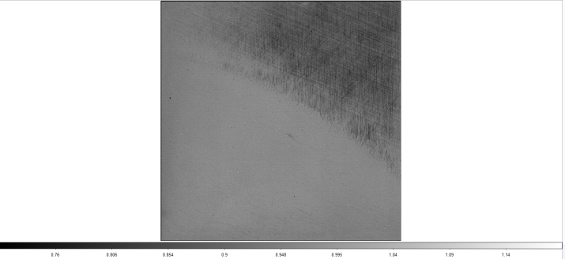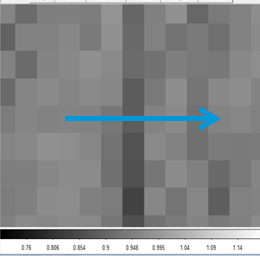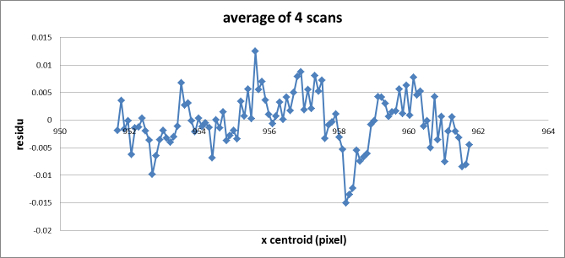Impact of cross-hatched pixels on centroid computation with the Euclid NISP SCS detector
As support to the Euclid mission, a test bench featuring a beam with F#13 numerical aperture has been commissioned to measure the impact of the sub-pixel cross-hatching in the NIR Hawaii-2RG detector utilised in the Euclid NISP detector. The cross-hatching leads to a sub-pixel spatial modulation of the quantum efficiency and has its origin in the lattice footprint of the CZT growth substrate imprinted upon the MCT active layer.
An F#13 beam projector has been installed on a 3-axis translation stage in front of the Euclid HAWAII-2RG detector maintained at a temperature of 100K with mK stability. The fully automated system allows engineers to record frames at 1100 nm, 1550 nm and 1950 nm. The spot size is diffraction limited with an Airy function projected onto the detector.
 |
|
 |
Above: This figure shows the residual from a fit to a linear scan at 1950nm with a step size of 0.2μm between pixel 952 and pixel 962, transiting a known cross-hatch at pixel 958. The effect of the cross-hatch is clearly visible and impacts the centroid computation by 0.015 of a pixel or 0.27μm. Credit: ESA Left: Scanned region. Credit: ESA Below: Impact on residual of one cross-hatched pixel located at x=958. Credit: ESA |
 |
|
